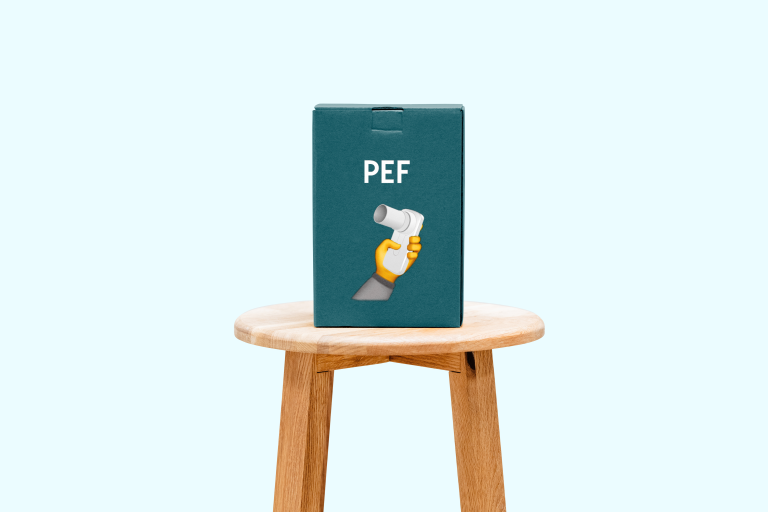🌬️What is PEF measurement?
PEF stands for "peak expiratory flow" and describes how fast someone can exhale. AsthmaTuner's spirometer works both as a lung function meter and a PEF meter, meaning that healthcare professionals don't need to prescribe a separate meter. Patients also don't need to manually note their results – everything is saved automatically.🕖 When should the test be performed?
According to the updated guidelines, patients should carry out two measurements daily: one in the morning and one in the evening. If symptoms arise, additional measurements are recommended. The aim is to identify any sudden changes in lung function.📏How should measurements be calculated?
According to GINA's guidelines, daily variability in PEF is calculated by subtracting the day's lowest PEF value from the highest, and then dividing the result by the average of these two values. This is done on average over a week. For each PEF measurement, you should use the highest of three readings.🔍How should the values be interpreted?
If the daily variability exceeds 10% for adults or 13% for children, it could be an indication of asthma. In AsthmaTuner, both daily variability and a weekly average are presented. If this weekly average of daily variability exceeds 10% for adults or 13% for children, it may indicate asthma. The example in the image thus suggests asthma for adults.
In AsthmaTuner, both daily variability and a weekly average are presented. If this weekly average of daily variability exceeds 10% for adults or 13% for children, it may indicate asthma. The example in the image thus suggests asthma for adults.




